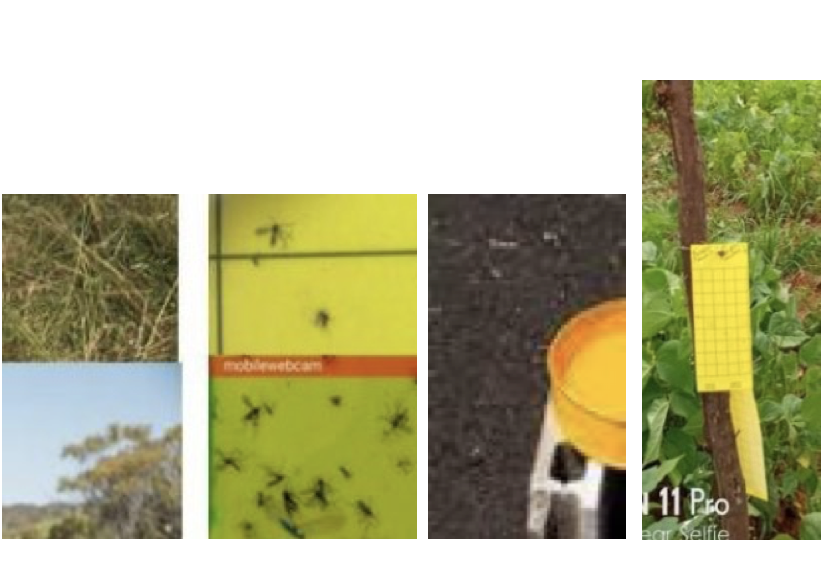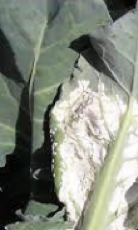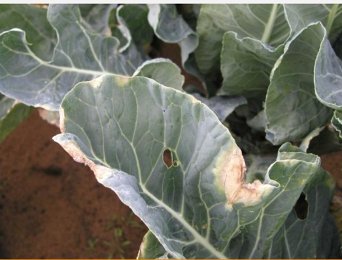Kales TIMPs
Introduction
Kale is a green, leafy, vegetable that is rich in nutrients and offer a range of health benefits. Popularly known as Sukuma wiki, kale is widely used in Kenya as a staple food. Kale are widely adapted to both cold and warm areas. It is drought and heat tolerant. It’s tolerant to soft rot and black rot diseases. It matures early within 90 days after transplanting. They are popular for warm climates with little rainfall or minimal irrigation. It takes short to mature (three months) and fits within one growing season. It can be harvested several times before the need to plant again.
Collards Southern Georgia
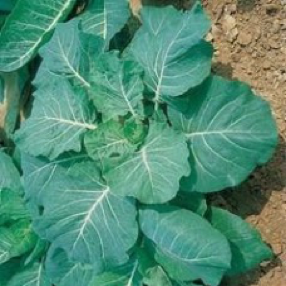
- Widely adapted to both cold and warm areas.
- Drought and heat tolerant.
- It’s tolerant to soft rot and black rot diseases.
- Matures early within 90 days after transplanting.
- It’s high in vitamin A and C.
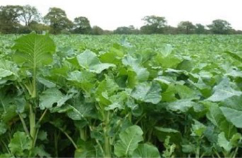
- Widely adapted to warm areas.
- Early maturing
- Tasty and soft
- Its tolerant leave spot
- Yields 35-40 t/ha.
Marrow Stem
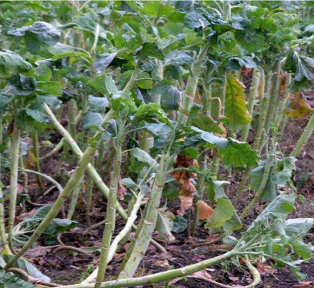
- Widely adapted to both cold and warm areas.
- Drought and heat tolerant.
- It’s tolerant to soft rot and black rot diseases.
- Matures early within 90 days after transplanting.
- It’s high in vitamin A and C.
Moss curled Kale
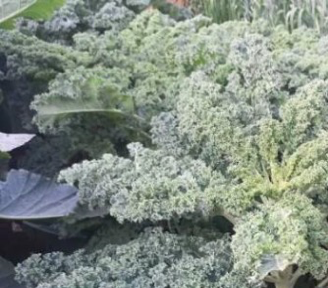
- Moss curled Kale is adapted to areas with low temperatures and good distribution of rainfall. It takes short time to mature (three months) hence fits within one growing season. It can be harvested several times before the need to plant again. The leaves have good digestibility and therefore with high consumer acceptability.
- It has large dark green curly leaves.
Mfame F1
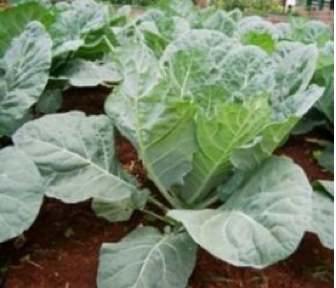
- Early maturing
- Tasty and non acid
- Its tolerant leave spot.
- Yields 35-50 t/ha.
Ethiopian Kales (Kanzira)
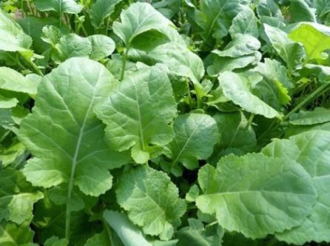
- Cold tolerant variety that is suitable for cultivation at high attitudes.
- Early maturing and harvesting starts from 35 days after sowing and can continue for up to 10 weeks.
- The leaves are however highly perishable.
- Takes short time to mature hence fits within one growing season. The leaves are less acidic when cooked hence preferred choice among people with stomach ulcers.
Kinale
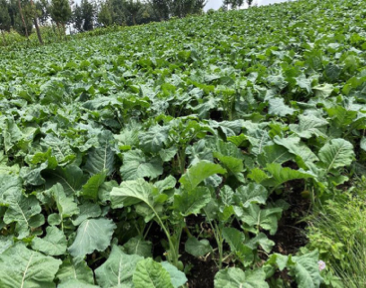
- High seed yield variety.
- Early maturing variety ready for harvesting 1 month after transplanting.
- Has wide adaptability ranging from 1100m – 2500m above sea level. The leaf yield is high ranging from 90 – 245 t/ha. The seed yield is also very high.
- Can be harvested for long period before the need to plant again.
Tosha
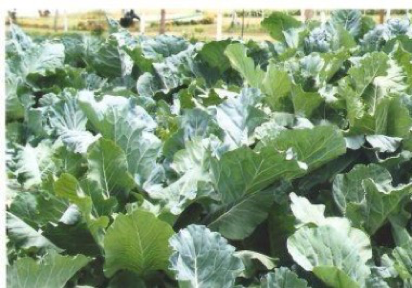
- Early maturing variety ready for harvesting 1 month after transplanting.
- It has wide adaptability ranging from 1100m – 2500m above sea level.
- The leaf yield is high ranging from 119 – 218 T/ ha.
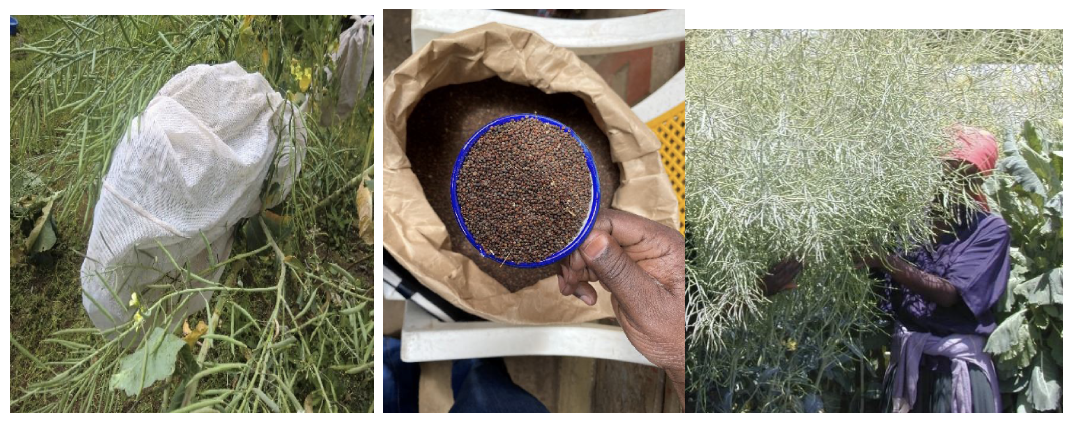
- It is a community seed bulking which is a process of engaging selected individuals or farmer groups to multiply.
- Production site should be relatively free from diseases and pests.
- Plot should be in a separate farm to avoid genetic mixture.
- Requires lower temperatures for longer days for flower initiation and therefore the flowering should be timed to take place during the cold season.
- Off types and crop volunteers should be uprooted.
- At flower initiation the flower buds are covered with paper envelop to prevent pollen contamination from another nearby varieties.
- The bagged flower buds should then be pollinated artificially during flowering with pollens collected from the same variety.
Use of stem cuttings in propagation of Kale
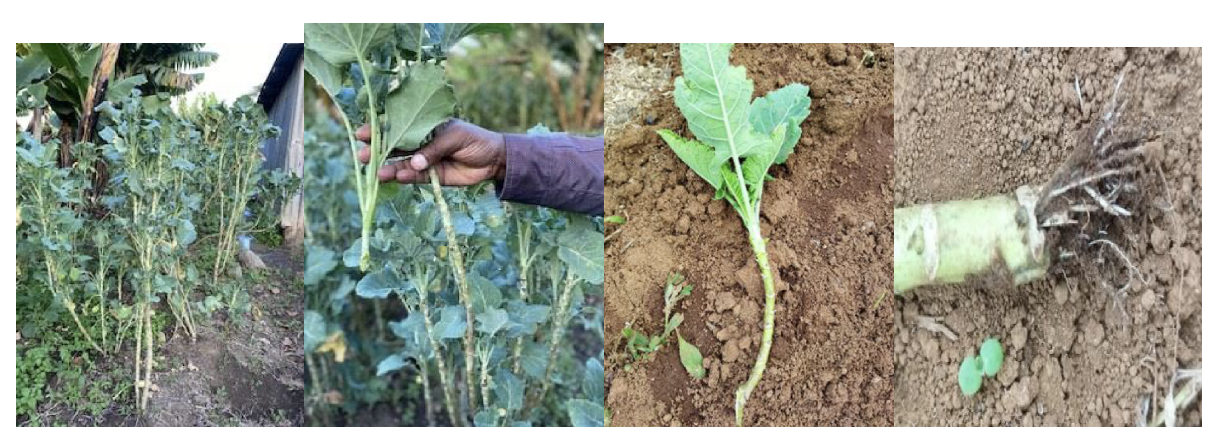
- It is multiplication or reproduction of plants using the vegetative parts such as stem cutting.
- Cuttings are detached vegetative parts of a plant which on planting are able to regenerate into a new plant.
- Vibrant, high yielding disease and pest free plants are selected in the field as mother stock.
- The terminal shoot is nipped to allow production of many lateral shoots.
- The lateral shoots are allowed to grow to a length of 10-20cm.
- A slant cut is given just near the base of the shoot using a clean knife.
- The cuttings are kept on moist cloth under shade awaiting planting.
- Dipping the base of the cutting in fungicide solution before planting reduce infection.
- The cuttings are planted in slanting position so that their maximum base is in contact with soil.
- The soil should be kept moist to ensure quick development of roots.
Kales formal seed system
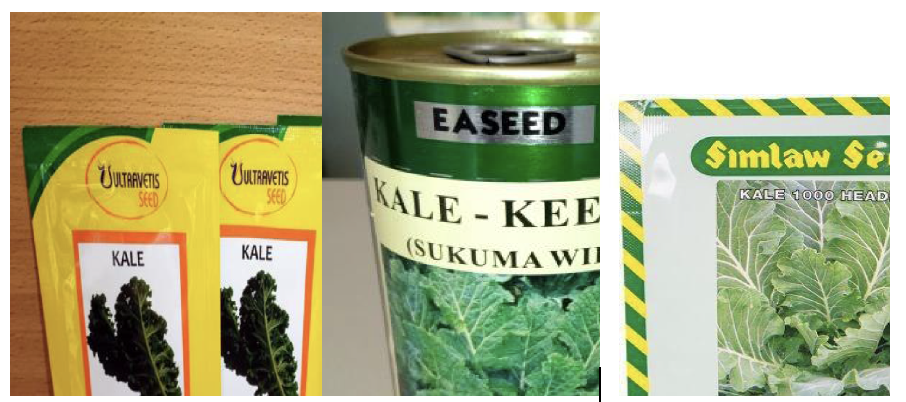
- Process of producing seed starting from release of varieties, production of early generation seed, and certified seed up to the stage where the farmers can access it through seed merchants for planting.
- The main stakeholders in formal seed systems include breeders, seed companies and retailers among others.
- Regulation exists in this system to maintain variety identity and purity as well as to regulate physical and sanitary quality.
- In Kenya, more than 8 Kale varieties have formal seed system.
- Standardized production system globally designed to reassure consumers about how food is produced on the farm, pre-farm gate or on-farm standards.
- It is not about a specific crop production but the process through which production takes.
- The four 'pillars' of GAP (economic viability, environmental sustainability, social acceptability and food safety and quality) are included in most private and public sector standards.
- Commercialization of Kale highly depends on compliance to these market standards.
Raised, flat and sunken nursery beds

- The raised beds nurseries are for high rainfall areas where seed planting area is elevated by 20 to 30cm above ground to allowing the drainage of excess water from the bed.
- Flat beds nursery is meant for areas with moderate rainfall aimed at conserving moisture where the seeding area is raised by 10cm above ground.
- Sunken beds on the other hand are meant for arid and semi-arid areas with minimum rainfall and helps in moisture conservation.
Seed Trays for clean planting materials
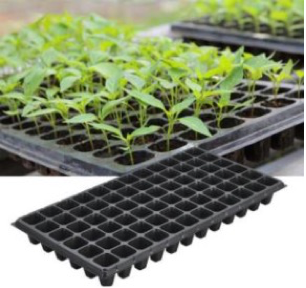
- These are plastic trays with small holes where media is put and kales seeds are sown.
- The seedlings are supplied with nutrients and water until they are ready for transplanting.
- The trays reduces the transplanting shock and are easy to transport.
- They are cost effective as they can be reused many times.
Exclusion nets for nurseries pest and disease control
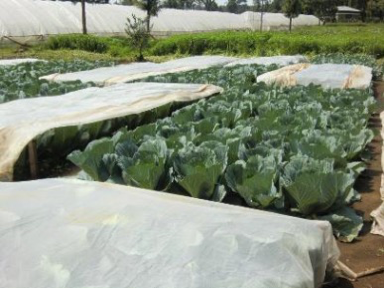
- Creates a barrier that protects the seedlings against pests and associated diseases.
- Net also protects the seedlings from environmental hazards and small animals.
- Can also serve as floating row covers to control temperature, light, relative humidity and soil moisture for plant production.
- The nets are low-cost and can be reused for 3–5 years.
High Health soilless Nursery

- The use of soil less media gives assurance of high health to the resultant seedlings.
- Seedlings are raised in containers placed away from the soil and contain soilless media. Seeds are placed in this media and provided with all other nutritional and water requirements necessary for germination.
- When the seedlings achieve the desired growth, they are ready for transplanting in the field and are free from any soil borne contaminants.
Land Preparation
- Till the land before planting and before onset of rain.
- Early land preparation is recommended in order to expose pests to sunlight and birds.
- Ploughing should be done 2 to 3 weeks in advance at about 7-9 inches deep, followed by harrowing, 2 to 3 weeks after ploughing then preparation of the soil to a fine tilth.
- Crop residue can significantly increase the organic content if incorporated into the soil.
- It is advisable to carry out soil analysis to ensure optimum fertilizer application.
- Add manure and fertilizer with recommendations from soil testing and analysis.
Recommended Kale plant spacing in the field

- The ideal spacing and plant population are those that maximize yield and quality without unduly increasing costs.
- The appropriate spacing differs from one place to another depending primarily on the variety.
- The tall and spreading varieties require wider spacing while the dwarf ones require closer spacing. The recommended spacing of Kales seedlings is 60 cm between rows and 45-60 cm between plants in shallow holes that are 20 cm deep and 20 cm wide
Kales legume intercropping
- Common goal is to produce a greater yield on a given piece of land by making use of resources or ecological processes that would otherwise not be utilized by a single crop.
- The practice allows different crops with varying rooting, shapes and nutrient requirements to co-exist on the same piece of land.
- Single row intercropping: involves the component Kales and the legumes such as common beans arranged in alternate single rows.
- The space between the two Kales rows is 60cm and the legume is planted in between so that between beans and Kale row is 30cm.
- The beans are planted two weeks before transplanting Kales.
Crop rotation for increased yield
- It’s a practice of growing different types of crops (or none at all) in the same area over a sequence of seasons.
- A basic principle of crop rotation is to avoid growing Kale in the same spot for consecutive years.
- Avoids pest and diseases build up.
Integrated Manure Management (IMM)
It is the optimal, site-specific handling of livestock manure from collection, through treatment and storage up to application to crops.
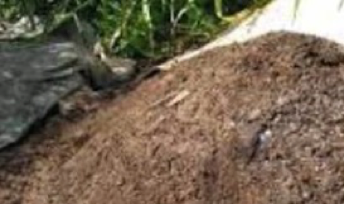
Integrated Soil Fertility Management (ISFM)
- The use of fertilizers, locally available organic inputs and improved seed combined to adapt practices to local conditions.
- It places emphasis on the importance of using often scarce resources like fertilizer and organic inputs efficiently through techniques such as fertilizer banding and micro dosing.
Rapid soil testing services
- This is a dry method for soil testing which does not require laborious laboratory analysis.
- The method uses simplicity of light - the interaction of electromagnetic radiation with matter to characterize biochemical composition of a soil and/or plant tissue.
Low-Cost Composting
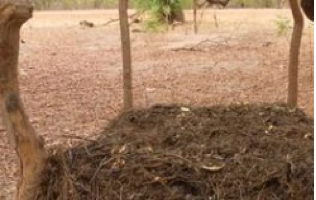
Composting is the biological decomposition of organic waste such as food or plant material by bacteria, fungi, worms and other organisms under controlled aerobic conditions resulting in an accumulation of partially decayed organic matter called humus.
Contour bunds
- Contour bunds are stone or earthen walls built across a slope to prevent runoff.
- Making furrows parallel to the contours ensures that rainfall and runoff are spread evenly over a field.
- The earthen bund is formed by excavating a channel and creating a small ridge on the downhill side.
Zai Pits
- Zai Pits are small planting pits typically measuring 15-30 cm in width, 10-20 cm deep and spaced 60-80 cm.
- Zai Pits harvests and stores water for prolonged crop use.
- Farmers plant seeds into the pits after filling one to three handfuls of organic material such as manure, compost, or dry plant biomass.
- Highly suitable for areas with unpredictable rains especially the drought-prone areas (ASALs).
Bench terraces
- Bench terraces consist of a series of beds which are more or less.
Stone lines
- They are stones placed along contour lines to slow down run-off.
- With time, the soil builds up on the upslope side of the stone line and a natural terrace is formed.
- Suitable in gentle to moderate slopes (less than 10%); areas with low annual rain fall areas (200 - 750 mm); and stony areas
Retention ditches
- Retention ditches are trenches designed to catch and retain incoming runoff and hold it until it infiltrates into the ground.
- They can be an alternative to waterways in high rainfall areas, but they are most often used in semi-arid areas to harvest water.
- Suitable in semi-arid areas; permeable, deep and stable soils; and on flat or gentle sloping land.
Grass strips
- They are dense strips of grass panted up to a meter wide, along a contour. With time, silt builds up above the strip and benches are formed.
- Grass strips can be planted along ditches to stabilize them, or on the rises of bench terraces to prevent erosion.
- Suitable in regions with fairly gentle slopes (0 - 6%); grass is needed for fodder; and high rainfall areas.
Tied ridges /Ridging /Earthing
- Tied ridges are small earthen ridges, 30 cm high, with an upslope furrow which accommodates water between the ridges.
- Consist of water flowing down the small trenches/furrows running parallel and infiltrates into crop root zones.
- Water is applied to the top end of each furrow and flows down the crop field under the influence of gravity.
Rain water harvesting systems
- It is a technique of collection and storage of rainwater into natural reservoirs or tanks, or the infiltration of surface water into subsurface aquifers.
- Fight water scarcity and make agricultural production more resilient.
- One method of rainwater harvesting is rooftop harvesting and harvesting through earth dams.
Conservation Agriculture (CA)
- It’s a management practice which maximizes on saving water on the farming by adhering to specific principles that govern it.
- Conservation agriculture principles are: 1. Minimal soil disturbance, 2. Permanent ground cover - maintenance of a mulch of carbon-rich organic matter covering and feeding the soil, 3. Crop rotation.
Mulching
- Covering the soil/ground with natural materials such as straw, dead leaves and compost to make more favorable conditions for plant growth, development and efficient crop production.
- Benefits: retain moisture in the soil; suppress weeds; keep the soil cool; and help improve soil fertility (as the mulches decompose)
Drip irrigation systems for small scale farmers
- Supplements water in crop production systems.
- It allows the optimal usage of the limited water resource by dripping water slowly into the crop roots at low pressure through a number of emission points (drippers).
- Drip system saves water by minimizing evaporation losses and delivering water at the root zone where it is required.
Solar Irrigation for smallholder farmers
This is the sole use of solar power in the pumping of irrigation water and running of the irrigation systems.
Hydroponics technology
Hydroponic farming is soilless farming system that utilizes inert media as an anchor to the crop and a rich nutrient solution applied for the growth of the plant.
- This utilizes a small area and accommodates higher crop population than the conventional method of farming.
- Use of locally available soilless media such as pumice, coco peat contributes into the reduction of the cost of production such as weeding, water usage, soil analysis and more
Agroforestry for soil fertility
- Improved fallows; Leguminous trees planted in natural fallows.
- Hedgerow intercropping /alley cropping; Leguminous tree species planted in hedges.
- Green manure; Biomass from growing leguminous plants that are cut at a certain height and ploughed back to the soil as source of manure.
- Mixed cropping; system of sowing two or three crops (that includes a legume) together on the same land, where one is the main crop and others are considered subsidiaries.
- Multi-strata; An agroforestry system whose components (crops, trees, shrubs, livestock) occupy distinct layers of the vertical structure of the community.
Scouting in Pest and Diseases Identification and Management
- Scouting involves regular monitoring the incidences of pest damage to crops.
- The purpose is to gain a good understanding of insect pests, diseases, weed and beneficial insect activities in your crop.
- Effective monitoring includes assessing the numbers of insect pests as well as the beneficial insects in a crop together with the incidences of diseases and weeds
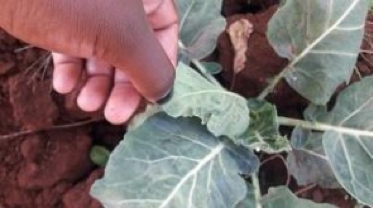
|
Integrated Management of Diamond back moth (Plutella xylostella) |
Integrating control measures including cultural practices, biopesticides, biological control and soft pesticides that are used in controlling the Diamond back moth which affects Kale by lowering yields and compromising quality. |
|
Use of Traps in Management of Aphids (Brevicoryne
|
|
|
The Sawfly |
Control
|
|
Aphids |
Control Aphids can be controlled by the use of natural enemies e.g. ladybirds and wasps. You can also use pesticides and insecticides. |
|
White flies |
Pest control strategy
|
|
Cutworms |
Disease Management
|
|
Powdery mildew |
Control:
|
|
Leaf spot |
|
|
Downy mildew |
Downey mildew develop in wet or humid conditions. Control:
|
| Damping Off |
Control:
|
| Integrated Management of black rot (Xanthomonas |
|
|
Integrated Management of Cauliflower Mosaic disease affecting Kales Cauliflower Mosaic disease (Source: infonet biovision)
|
|
|
Integrated Management of club root (Plasmodiophora brassicae) disease of Kales
Club root disease affecting Kale (Source: ag.umass.edu) |
|
|
Integrated Management of White mold (Sclerotinia sclerotiorum) disease White mold disease
|
Control
|
|
Integrated Management of White rust (Albugo candida) disease of Kales |
Control
|
|
Integrated Management of black leg (Phoma lingam) disease of Kales
Black leg of crucifers (Source:ag.umass.edu) |
Control
|
|
Integrated Management of bacterial soft rot (Pectobacterium carotovorum subsp. carotovorum.) disease of crucifers Bacterial soft rot affecting Kale stem and leaves causing losses in crucifers production.
|
Control
|
Weed Management
- 1st weeding is done 3-4 weeks after transplant and 2nd weeding done just before topdressing.
- Proper weed control is very essential for improved quality and quantity produce.
- Weeds in and around the field can harbor insects and disease pathogens that can invade or spread to the crop soon after planting.
- Various methods are used to control weeds in kales crop: Chemical cultural, mechanical control in kales.
Chemical Weed Control
- It’s any technique that involves the application of herbicide to weeds or soil to control the growth or germination of the weed species.
Mechanical weeding
- Plant clean certified seeds in weed free well prepared ground.
- Planting to be done in rows to facilitate inter row weeding. Two weedings at 15 and 30 days after sowing (DAS)
Row Weeders (Manual/ motorized)
- These implements are used to weed between the rows. The intra row weeds are removed by hand pulling.
Crop Rotation in Kales
- Keep plants of same type together. E.g. kales-beans or peas-parsley-carrot or onions.
- Kales is a heavy feeder and should follow legumes.
Safe Use of Herbicides
- The management include proper methodologies for proper herbicide disposal to minimize pollution of the environment, health and social hazards.
Maturity
Kales get ready to be harvested 6 weeks after transplanting You have to harvest them at this point, or else they will start turning yellow and fall off.
Site Selection
Select a site for Kale production with well-drained soil, rich in organic matter, sufficient moisture and pH of 6.0 – 6.5.
Ecological requirements:
- Altitude 800 – 2200 meters above sea level
- Rainfall 750mm
- Temperature 17 - 300c.
Pre Planting
- Ensure Kale nursery has fine soil free of stones, soil crumbs, roots and plastics.
- Beds width of 1 meter and a convenient length not exceeding 100 meters and a height of 15 centimeters.
- Row spacing should be at least 15 cm.
- The furrow seed sowing should be 1-2 cm deep.
- Apply DAP at a rate of 50gms/ms or use any other compound fertilizer as per soil test results.
- Seed should be treated with a fungicide and insecticide to protect seeds from pest and diseases
- Cover the seed lightly with a 1cm layer of fine soil, water, cover with straw or dry grass well.
Seedbed Preparation
There are two main methods of preparing seed beds namely: double digging and planting on flat land. In dry areas practice double digging. In less dry areas you may use the conventional method of planting on flat land.
Double digging
- Measure a plot 1 m width 15 m length (1 step by step 15 steps)
- Dig to a depth of 15 cm (length of palm of the hand)
- Remove the dug soil and put it to one side of the dug portion
- Cover the dug portion with green plant materials (e.g banana leaves, young weeds, tree leaves, and green maize leaves) so that the ground is properly covered.
- Put farm yard manure to a depth of 5 cm
- Mix the soil removed earlier and mix it well with a bucket (15 kilograms) of well decomposed animal manure, then return it on top
- Flatten the seedbed and break large soil clods so that the bed is well levelled. You’re now ready to plant the vegetable seedlings.
Seeding in the Nursery
Planting
Transplanted kales
Water Management
- Irrigate the kale crop when necessary.
- Kale requires an optimal amount of 750 mm of rainfall during the growing period.
- In areas with lower rainfall, water deficit problems should be addressed through irrigation.
- When growing kale in the field. You can use sprinkler or drip irrigation systems in order to keep soil constantly moist. Farmers may apply a thin layer of mulch (straw, leaves, crop residues, green manure crops, or saw-dust) to the ground.
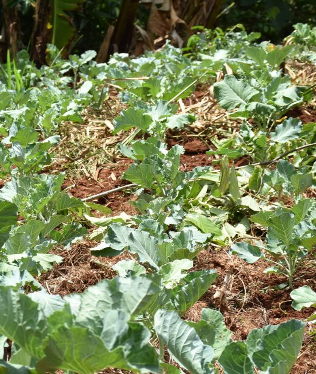
Mulched Kale plot
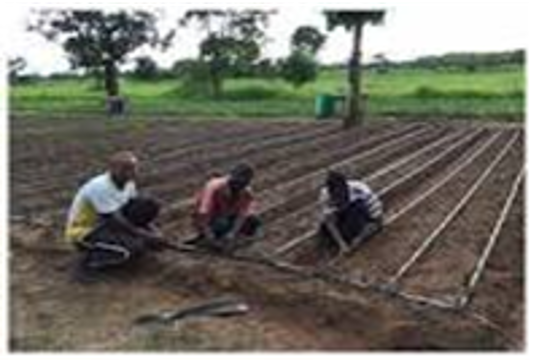
Laying of drip irrigation pipes

Watering kales nursety bed
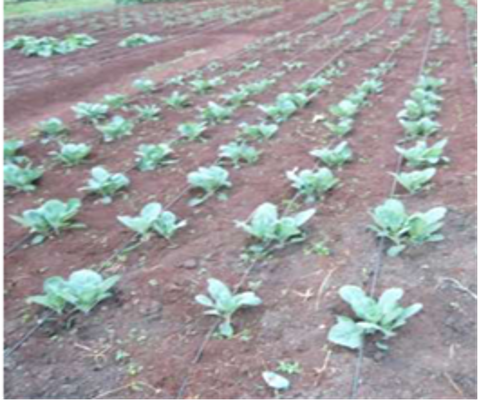
Drip irrigation
Soil Fertility
- Test soils before planting to guide application rates of manure and fertilizer.
- Maintain soil health for good production and income.
- Top dressing; apply 50kg of CAN in one acre, two weeks after transplanting and after 4 weeks, at rate of 50kg per acre. It can also be done using other nitrogen-rich fertilizers like N.P.K 23.23.0.
- Test soils first to guide application of manure and fertilizer.
- Practice conservation farming approaches, minimum soil disturbance, permanent soil cover, crop rotation and soil conservation measures.
Crop management
- Top dress, irrigate if necessary and control weeds timely.
- Remove weak plants under moist soil conditions 14 days after planting.
- Practicing conservation tillage is recommended for moisture conservation and to reduce field operations by farm equipment thus reducing soil compaction.
- In disease management crop residues should be removed from the field and destroyed or deeply ploughed in to reduce sources of diseases infection and spread.
- Mulch around Kale to preserve soil moisture and keep the soil cool in warm weather.
- Intercrop kales with trap crops (crops that attract pest and keep them away from the main crop) or repellant plants, to reduce pest infestation.
- Check field regularly for pest and disease.
Pest Management
Early detection of pests and diseases is good for easier control of outbreaks.
Harvesting
- Harvesting period begins 6 weeks after transplanting and can last for 4 –6 months.
- Kale is hand harvested either as a whole plant, shoots or just for its leaves.
- A picker should look for kale with firm, deeply colored leaves.
- Pluck the lower leaves each time leaving 3 –4 top leaves.
- When harvesting the leaves, always leave part of the stalk attached to the stem.
Storage
- Pack in well ventilated containers.
- Do not store Kale together with ripening fruits or vegetables the ripening fruits and vegetables emit what is called ethylene gas which causes yellowing of leaves.
- Kale can be wrapped in a damp paper towel, placed in a plastic bag and stored in the refrigerator for up to 14 –21 days.
- It should not be washed before storing since this may cause it to become limp. Store in a place with adequate air circulation.
- Alternatively, sell the produce immediately while fresh.
Sort by separating the yellow or damaged leaves from the good ones. Grade the leaves by size, bunching those of the same size and tying in small bundles before packing in well ventilated container for transportation to markets.
- Source for market prior to harvesting. Kale is easily available in most local market in the country.
- The demand for kales in the market is very high. Some of the market opportunities for the produce include institutions like schools and hospitals, supermarkets and open-air markets, among others.
- It is best recommended to sell kale straight from the farm while it is still fresh.
- The prices are often high during drought seasons from November to March then fall on rainy seasons due to high supply and availability of other substitutes like Amaranth. Prices also tend to be low on school holidays as schools tend to absorb the excess. But the good thing with kale farming is that it will always give you a profit which is determined by the scale of production due to the economics of scale.
- Kales are mainly used as a vegetable in main dishes and in various salads. It is sometimes used as livestock feed.
- Nutritionally kale has Vitamins A, C & K, fiber, manganese, copper and potassium.
- Kale is highly perishable resulting to high postharvest losses and short shelf life. Processing of kales into dried products enhances shelf life thus ensuring availability during off season.
- Kale flour processing add value to the kales, this increases their economic value thus giving better returns to farmer or various value chain actors.
- The younger leaves are a tasty addition to some salads while the more mature ones become more flavorful as they grow.
Ingredients
- Sukuma wiki leaves raw (2667 g)
- 2 tomatoes, red, ripe (345 g)
- 1 onion, red skinned, raw, unpeeled (184 g)
- ¼ cup (45 g) cooking oil.
- ½ tsp. (3 g) salt, iodized.
Preparation 15 minutes
- Wash the Sukuma wiki and then remove the stalks.
- Roll up a handful of Sukuma wiki leaves into a bunch and chop them finely.
- Wash, prepare and cut the onion and tomatoes separately.
- Place a cooking pot on the fire. Add cooking oil.
- Cook the onion until golden brown.
- Add tomatoes into the pot.
- Cook tomatoes until ready.
- Add the chopped sukuma wiki and salt.
- Stir until evenly mixed.
- Simmer over low heat for 5 minutes.
- Serve hot.
- Basic costs (variable costs) KES 30,000/acre.
- Estimated returns (gross margin) KES 80,000/acre.
- However, the gross margin will largely depend on the variety grown, the level of management employed by the farmer and prevailing market situation.

https://www.jica.go.jp/project/english/kenya/015/materials/c8h0vm0000f7o8cj-att/materials_24.pdf
https://www.farmworx.co.ke/the-simple-secrets-of-kale-sukuma-wiki-farming/
https://infonet-biovision.org/PlantHealth/Crops/CabbageKale-Brassicas
Contacts
The Institute Director, KALRO-HRI Thika; E-mail: director.hri@kalro.org
Officer in Charge, KALRO Practical Training Centre.E-mail: info.ptc@kalro.org
The Centre director, KALRO-Muguga Email: kalro.FCRC@kalro.org
The Centre director, KALRO-Kabete; E-mail: cd.narl@kalro.org
The Institute director, KALRO-FCRI Kitale; E-mail: director.fcri@kalro.org
